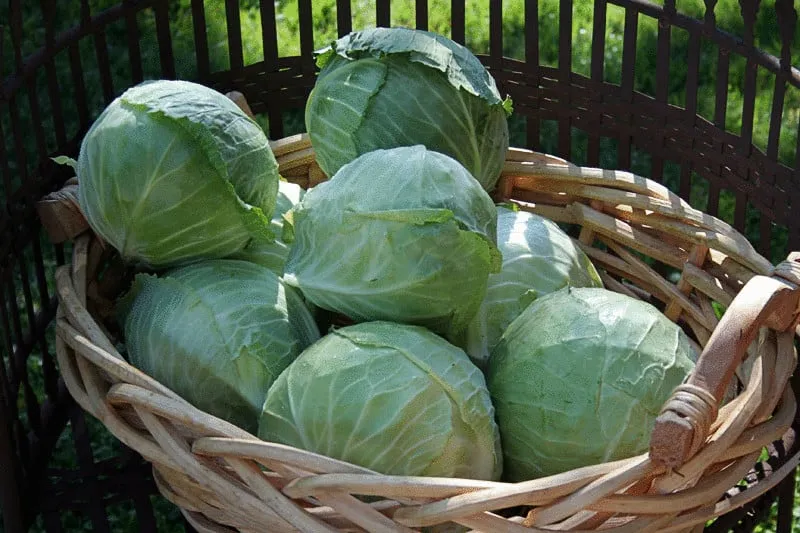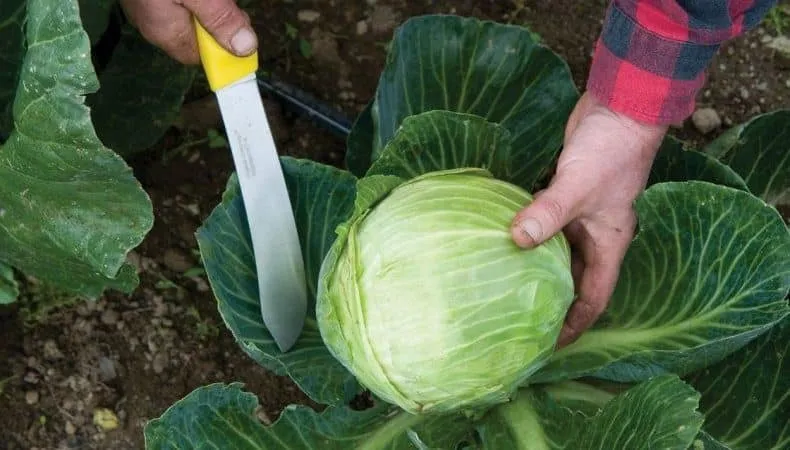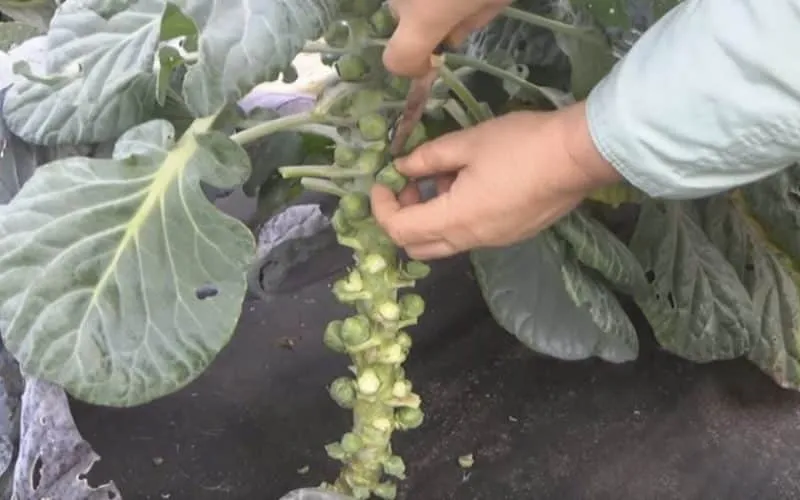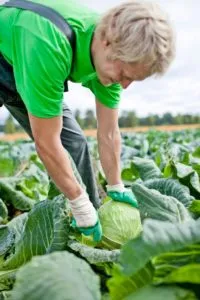Cabbage is a hardy vegetable crop. However, growing it successfully requires adherence to proper agricultural practices. This includes not only planting and care but also the timing of harvest. Picking heads too early or too late can damage them and significantly reduce their shelf life. Learn when to harvest cabbage, including late varieties, from this article.
Table of contents
When to Harvest Cabbage from the Garden
Many gardeners rush to harvest cabbage as soon as the heads reach a decent size. However, premature harvesting often leads to crop loss, as underdeveloped heads remain loose and poorly formed. Conversely, overripe cabbages tend to crack and spoil quickly.

The ideal timing for harvesting cabbage for long-term storage depends on several factors, making it difficult to pinpoint an exact date. Consider the following:
- climatic conditions of your region;
- potential weather anomalies;
- the specific maturation period of the cultivated variety (sowing and transplanting dates) and its frost tolerance.
Before harvesting, check each head for maturity. Different varieties exhibit distinct signs of readiness.
However, some general indicators include:
- firm and dense heads;
- fixed size, cessation of growth;
- yellowing and dryness at the top;
- fading outer leaves.
Cauliflower and broccoli, when mature, develop tight and compact florets. Their leaves become brittle and snap when bent.
Best Time to Harvest Cabbage for Winter Storage

Climate plays a crucial role in cabbage maturation. Cool and moist conditions promote rapid growth and development. In contrast, hot and dry summers slow down head formation, delaying the harvest.
Planting times also vary by region: in Southern Europe, seedlings can be transplanted as early as May, while in Northern Europe, this is typically done in June. Consequently, northern harvests occur later.
Cabbage varieties are categorized by their growth duration:
- early;
- mid-season;
- late.
Early varieties mature within 100 days of sowing and are usually harvested from mid-July to early August.
Important! Early cabbage is unsuitable for long-term storage and should not be left in the field too long, as it cracks easily after ripening.
Mid-season and late varieties require around 150 days to mature. These types store well and are ideal for fermentation. Harvesting typically occurs from late September to early October. Late cabbage is best picked just before heavy frosts to maximize shelf life.
Harvesting times for early and late white cabbage varieties across Europe:
- Northern Europe – mid-September;
- Central Europe – late September to early October;
- Southern Europe – mid-August, occasionally early September.
Red cabbage is harvested as each head reaches firmness. In mild climates, harvesting continues until mid-November, while in colder regions, it ends by mid-September. In temperate zones, the harvest period spans late September to mid-October.
Broccoli, a heat-loving crop, thrives in Southern Europe. Florets are cut as they mature, usually from mid-August to late September.
Cauliflower is harvested once the heads become compact.
Timing varies by region:
- Central Europe – August and September;
- Southern Europe – early July to early August.
In Northern Europe, cauliflower is grown exclusively in greenhouses.
Brussels sprouts are harvested in mid-September in temperate zones and late August in warmer climates.

Optimal Temperature for Harvesting Cabbage for Storage
Key guidelines for harvesting cabbage for storage:
- Avoid leaving early and mid-season varieties in the field if temperatures drop below -3°C, as frozen heads lose storage potential.
- If frost occurs, allow affected heads to thaw on the stalk for 5-6 days before harvesting.
- For fermentation varieties, light frosts (-4°C) enhance sweetness and flavor.
When to Harvest Late Cabbage
By November, late cabbage accumulates high nutrient levels and offers excellent storage qualities. However, delaying harvest risks head splitting and rot due to autumn rains.
Harvesting Period

Winter cabbage is typically harvested around 150 days after sowing. It stores well and is ideal for fermentation. In Central Europe, late cabbage is cut in mid-October, while in Scandinavia, harvesting occurs from early to mid-September. Southern Europe harvests in late October.
Frost-resistant Savoy cabbage can be left in the field until late November, enduring temperatures as low as -8°C. In colder regions, it should be harvested by October.
Brussels sprouts tolerate temperatures down to -10°C. In Central Europe, they mature by late September, while in Northern Europe, harvesting extends into early December.
Ideal Temperature for Winter Harvesting
While some believe cabbage must be harvested before frost, many cold-resistant varieties withstand temperatures as low as -6°C.
Important! Late cabbage should be harvested when nighttime temperatures drop to -4…-5°C and daytime temperatures stay below +8°C.
Conclusion
Choosing the right harvest time ensures long storage and optimal flavor. Consider regional climate and variety-specific growth patterns to determine the best timing for your crop.







